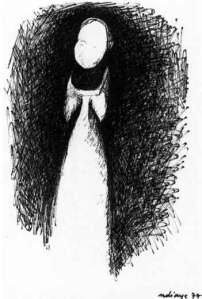
The establishment of Dakar as a global centre for modern and contemporary arts on the African continent can be traced back to Senegal’s independence in 1960 and the particular interventions of Senegal’s first president Léopold Sédar Senghor. By setting up a number of major national art institutions, and hosting large-scale international arts events in the capital city during the first decade of post-colonial independence, Senghor signalled that artistic modernism was to be one of the most prominent demonstrators of Senegal’s arrival as a ‘new’ nation-state on the world stage.
One of the most well written introductory texts exploring the significance of Senghor’s contributions to the development and consolidation of Senegal as an important geographical centre for contemporary (visual) arts in continental Africa is Elizabeth Harney’s work, ‘In Senghor’s Shadow: Art, Politics, and the Avant-Garde in Senegal, 1960-1995’ (Harney, 2004). This book features succinct summaries of the major changes that took place during the first four decades of the post-colonial era – including the establishment of Dakar’s École des Beaux-Arts (School of Fine Arts) in 1960 and the hosting of the World Festival of Negro Arts (1er Festival Mondial des Arts Nègres) in 1966, through to the founding of the Dak’Art Biennale in 1992. More recent developments up to the first decade of the 21st century are also skilfully documented in Joanna Grabski’s Urban Claims and Visual Sources in the Making of Dakar’s Art World City (Grabski, 2009).
Two post-independence contemporary art movements in Senegal that lend themselves to geographical analysis are Laboratoire Agit’Art and Sét Sétal:
- The arts collective Laboratoire Agit’Art was founded in Dakar in 1974 by (among others) the artists Issa Samb and El Hadji Sy. Their work emerged as a counter-response to the state-run arts and culture practices and initiatives introduced by Senghor (and initially based on the philosophy of Négritude). Members of Agit’Art frequently used performance and installation as key forms of artistic expression to respond to the prevailing socio-economic, political and environmental challenges in Senegal (and wider francophone African, ‘Eurafrican’ and Pan-African geo-political relations) during the late-20th century
- Sét Sétal (which translates from Wolof as “be clean/make clean”) was an urban movement established by young street artists and environmental activists in Dakar in the 1980s. The founders were motivated by increasing concerns about the poor provision of municipal services in residential neighbourhoods, and so formed groups to clean up street waste, repair public facilities and generally improve the overall appearance of their localities by painting murals and erecting large sculptural works around the city. The creation of public art became a key element of their social and community activism – using street paintings, graffiti art and architectural sculptures to address topical issues relating to health and well-being (including AIDS awareness), the eradication of poverty, national and local politics, as well as to beautify the city with commemorative portraits of cultural icons from Senegalese history on walls and pavements. Mamadou Diouf provides useful introductory analysis of the historical and cultural background to the Sét Sétal movement in his essays, Urban Youth and Senegalese Politics: Dakar 1988-1994 (Diouf, 1999) and Paintings and the Writing of History: Sét/Sétal in Dakar (Diouf, 2005).
For me, the leading Senegalese artists whose works have served as the most powerful and poignant visual commentaries on national politics – and who have also achieved significant world-wide acclaim as regards international contemporary ‘political aesthetics’, include: the painter and sculptor Iba N’Diaye (1928-2008); the abstractionist and sculptor Soly Cissé (b. 1969), whose paintings often explore the theme of the cost of modernity; graffeur/graffiti artist Big Key (Thierno Moussa Sane) (b. 1981); the writer and film-maker Ousmane Sembène (1923-2007), whose films serve as powerful visual metaphors of the transition from late-colonialism to independence – as exemplified in his pioneering feature-length work Black Girl [La Noire de…] (1966) and the Wolof-language satire, Xala (1975)); and the aforementioned Agit’Art painter El Hadji Sy (El Sy) (b. 1954), who came to prominence in the UK during the mid-1990s after co-curating and displaying several pieces of work in the Senegalese section of the celebrated survey show at London’s Whitechapel Gallery – Seven Stories (see Lampert, 1995).
References:
DIOUF, M. 1999. Urban youth and Senegalese politics: Dakar 1988-1994 In: HOLSTON, J. (ed.) Cities and citizenship. Durham, N.C.: Duke University Press.
DIOUF, M. 2005. Wall paintings and the writing of history: Set/Setal in Dakar. GEFAME: Journal of African Studies [Online], 2 (1). Available: http://hdl.handle.net/2027/spo.4761563.0002.102.
GRABSKI, J. 2009. Urban Claims and Visual Sources in the Making of Dakar’s Art World City. Art Journal, 68, 6-23.
HARNEY, E. 2004. In Senghor’s shadow: art, politics, and the avant-garde in Senegal, 1960-1995, Durham, N.C., Duke University Press.
LAMPERT, C. 1995. Seven stories about modern art in Africa, London, Whitechapel Art Gallery.
